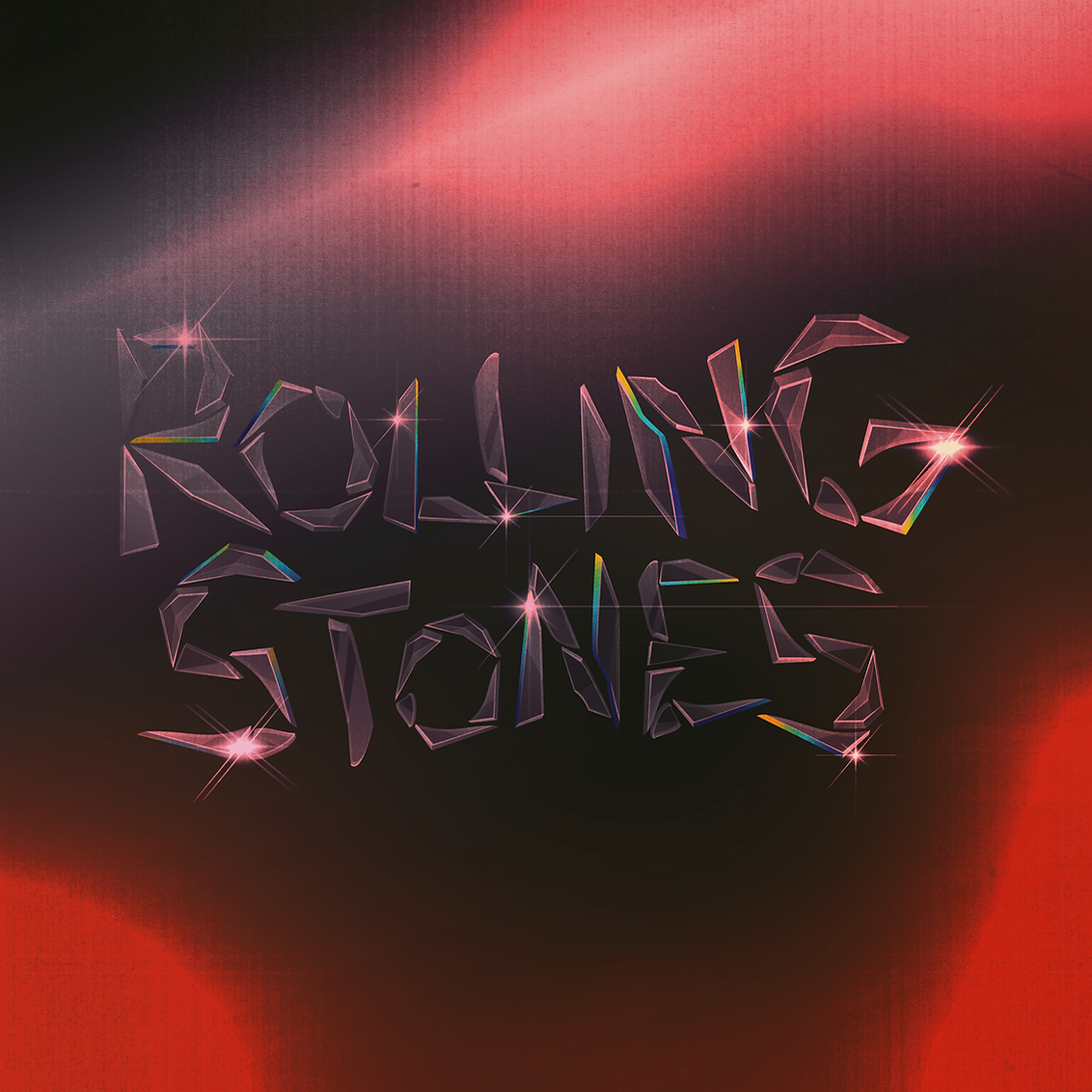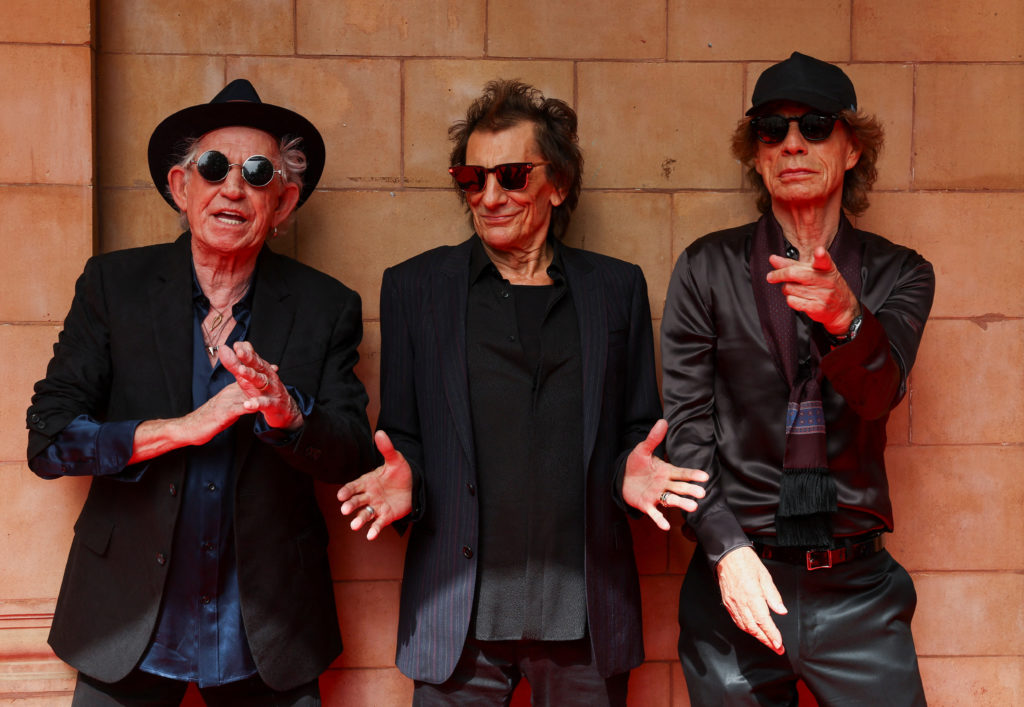Photo: REUTERS/Toby Melville
During my morning commute the other day, I took a rare pause from scrolling TikTok and saw an advertisement for a new Rolling Stones album on a passing billboard. I’m not a mathematically inclined person, but after my initial wave of surprise passed, I tapped into my moderately vast, and generally useless, supply of musical trivia facts to do a bit of mental arithmetic.
The Rolling Stones released their first album, “The Rolling Stones (UK)” in 1964. They released what is arguably their most famous album, “Let It Bleed” in 1969. And they released my favorite album of theirs, “Some Girls” in 1978. These albums make up just three of 22 records between the years 1964 and 1978.
Since then, they’ve released nine additional albums, including “Hackney Diamonds”, which was released nearly a month ago on Oct. 20.
Originally from Naples, Italy but now resides in Jersey City, Adeline Nocera, 61, has been a Stones fan since the early 1980s. She became a fan when she met her husband.
Nocera has been to about 20 shows up and down the east coast, which she described as “energetic” and “so alive.” After 18 years, the Stones released an album, which Nocera was thrilled about.
“Mick puts on a great performance,” Nocera told Slice of Culture. “Love listening to all their music… Very excited and looking forward to another concert.”
“Hackney Diamonds” rounds out their discography at a staggering 32 albums. This figure does not include live albums, compilation albums and/or video albums.

As I shook my head and looked back down at whatever video was looping on my phone, I wondered what could possibly have given the Stones such staying power throughout generations with increasingly diminished attention spans. Where did the disconnect between cultural monuments like the Stones and our modern brand of celebrity trendsetter emerge?
The Rolling Stones are a group that might carelessly be referred to today as “classic rock stars.”
It isn’t much of a leap to say influencer and trendy celebrity culture as we know it took much of its inspiration from early rock acts like the Stones —at least in their attempt to cultivate a unique aesthetic sensibility. They are a familiar enough story by now — Mick Jagger, Keith Richards, Ian Stewart, Charlie Watts and Bill Wyman emerged in the early 1960s as a counterpoint to the endearing and at that point relatively clean-cut Beatles.
They borrowed sounds from the American Blues scene and remixed them into their brand of loping, off kilter rock music. The Stones, unlike The Beatles, had a flair for the dramatic and Mick Jagger sounded like he had broken glass stuck in his throat.
This juxtaposition gave the band enough latitude to lift themselves from the early London rock scene. Jagger wore feather boas and skin-tight vests while prancing around the stage making grotesque, otherworldly faces. He wailed at the microphone and Richards wailed on his guitar. They had very explosive public relationships with supermodels. They had wild, controversial parties.
Does any of this sound familiar?
Sam Stout, a Gen Zer and a fan of the band “his whole life,” describes the Stones as “exactly what you’d expect a musician to be; amazing music, crazy parties, and an “I-don’t-give-a-sh*t” attitude about anyone who doesn’t like them. They can entertain any room in the world.”
Tom McMahon, a millennial, said “The Stones just have whatever that X-factor is. It’s a couple of times in a generation thing. You can’t put it into words, it’s just everything about them. It’s electrifying when you see Jagger or hear ‘Start Me Up.’”
It’s no coincidence that at 80 years old, Mick Jagger and Co. are still making music and prancing around the stage with the same vigor.
I listened to the lead single from their recent album, “Angry,” with my dad, who is also a long time Rolling Stones fan.
The first thing he said when it was finished was, “that’s such a Stones song.”
A comment like my dad’s makes it reductive to say that the Rolling Stones are simply among the first in a long line of rock stars or trendsetters.
The ability to carve out completely idiosyncratic and unmistakable language is really the key ingredient to maintaining a place in the cultural conversation for any length of time. This observation isn’t exactly novel, but it seems especially relevant in a world that is spiraling closer and closer towards an assembly line of “cool”, “click here to find your aesthetic,” “how to dress like old money,” and “are you #corecore or #cottagecore?”
Such ascriptions of style cater to our innate desire to create a particular vocabulary for ourselves —to have others acknowledge that a piece of clothing or a song or a movie is “so us.”
In my estimation, it wasn’t any single song or antic that placed them solidly at the inception of celebrity history.
The Rolling Stones birthed such an articulate visual and auditory vernacular that it is almost impossible not to recognize them, which is precisely what influencers and celebrities try to replicate today.
The synthesis of gaping-mouth-with-tongue-lolling motif, Richard’s chord progressions, Jagger’s wailing, the IDGAF attitude, the shotgun romances are all totems of who the Stones are.
There is even a magazine named after them that charts fluctuations in musical culture. This (and I hate to actually say it) vibe, is specific only to the Rolling Stones. Any attempt at an exact replication would seem like a knockoff.
In other words, they are the blueprint. And this is why the Rolling Stones are able to release 31 albums in 50 years.
There’s just no one else quite like them. There was no “#rockstarcore” to act as a guide while they were cutting their teeth. There are other great bands, sure, but each organic stylistic choice built upon itself to create a band uniquely their own.
Even among those that have taken the Stones’ formula and sharpened it in generations since, nothing has quite the authenticity of the original.
I imagine, as I plug back into my TikTok feed and do my best to create my own language and style, that Mick Jagger and the gang will continue being themselves for as long as they possibly can… and we’ll all continue doing our best to be as cool as they are.
“[The Rolling Stones] are icons and always will be. They turned on generations of family,” Nocera said.













